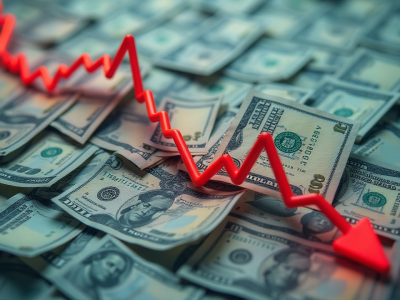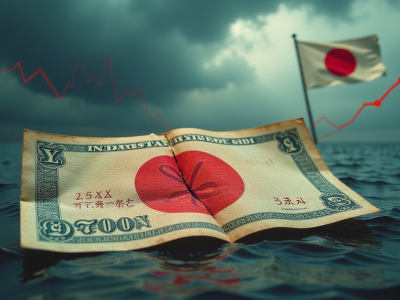
The US dollar index (DXY) continued its strong uptrend this week, reaching its highest point since August 2. It jumped to a high of $104.14, which was about 4% from its lowest level this year.
US bond yields jump
The surge in the US dollar index has coincided with the ongoing rally in Treasury bond yields. Data shows that US ten-year bonds were trading at $97.0, down from the year-to-date high of $105.23. The yield, which moves in the opposite direction as the bond price, jumped to a high of 4.226%, its highest point since July 26.
Similarly, the 30-year Treasury yield jumped to 4.51%, its highest level since July 26, while the five-year has jumped to 4.028%.
The DXY index also rose as the iShares 20+ Year Treasury Bond ETF (TLT) dropped to $92.32, its lowest level since July 26. It has dropped by almost 9% from its highest point this year.
The CBOE Volatility index, popularly known as the fear gauge in Wall Street, has dropped to $18.2, its lowest point since October 1.
This price action also happened as the US dollar weakened against most currencies in the index. For example, the euro, which makes up about 57% of the index, dropped to a low of 1.0800, its lowest level since August 5, and 3.68% below the year-to-date high.
Sterling crashed to 1.2985, while the USD/JPY pair rose to 151.68. The USD/CHF rose to 0.8665, its highest level since August 25. Gold, the best-known precious metal, has soared to a record high of $2,740.
Federal Reserve actions
The US dollar index has soared because of the recent economic data and the rising geopolitical risks.
Data released earlier this month showed that the non-farm payrolls (NFP) rose to 254k in September, beating the expected increase of 155k. The Bureau of Labor Statistics (BLS) also revised its jobs report for August.
The unemployment rate retreated to 4.1% in September, while wage growth continued growing during the month.
These numbers implied that the US labor market was better than expected, contrary to the previous estimate.
Another report released earlier this month showed that inflation was on its way to the 2% target, but was falling at a lower pace than expected. The headline Consumer Price Index (CPI) dropped to 2.4%, while the core CPI remained at 3.2%.
Data released last week showed retail sales jumped in October, while initial jobless claims continued retreating.
Therefore, analysts expect that the Federal Reserve will not be as dovish as was previously expected. Data by the CME shows that the odds of a 0.25% rate cut in the November 7 meeting stood at 87.5%.
At the same time, the odds of another 0.25% rate cut in the December meeting was 68.9% compared to 28.5% odds of a 0.50% cut.
Before the recent numbers, analysts were expecting the Federal Reserve to deliver a few jumbo rate cuts.
Geopolitical issues
The US dollar index has also soared because of the ongoing geopolitical issues, especially in the Middle East.
A leak released this week showed that Israel was preparing to strike Iran’s nuclear locations. In a statement, Iran threatened to strike Israel’s nuclear facilities as well.
Such tit-for-tat actions would likely lead to a wider conflict between countries like the United States, China, and Russia. The latter two countries are allies of Iran and would likely come to her defense.
The US dollar index rises when there are heightened geopolitical risks because of its role as a safe haven.
Meanwhile, the US general election is nearing. Data shows that there are rising odds that Donald Trump will win the election, with the Polymarket odds rising to 62% and Kamala Harris’ falling to 37%.
Official polls also show that his odds are rising. In theory, the US dollar index should fall if Trump wins because he pledges to devalue the currency. However, analysts believe that his policies like tax cuts and tariffs would lead to a stronger dollar because of the rising tensions.
US dollar index forecast
DXY index chart by TradingView
The DXY index continued its uptrend in the past few weeks, rising from a low of $100.20 to a high of $104.10, its highest point since August 2.
It has risen above the 50-day and 200-day Weighted Moving Averages (WMA), meaning that bulls are in control for now.
The MACD indicator has crossed the zero line, while the Relative Strength Index (RSI) has risen and moved above the overbought point of 73. It has moved above the key resistance level at $104, its lowest point on June 4.
Therefore, the US dollar index will likely continue rising as bulls target the next key point at $105.
The post DXY: Here’s why the US dollar index is soaring appeared first on Invezz












